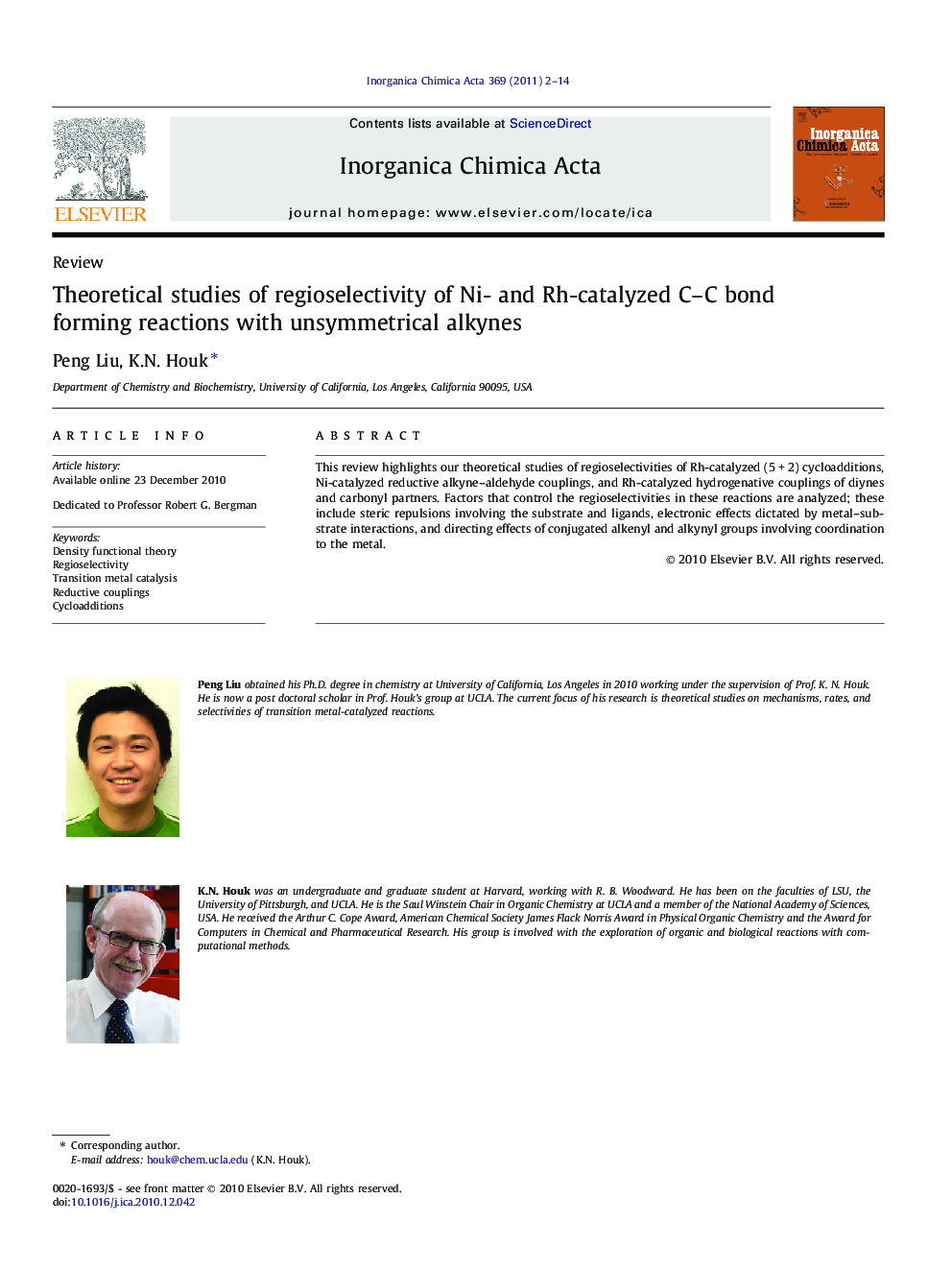| کد مقاله | کد نشریه | سال انتشار | مقاله انگلیسی | نسخه تمام متن |
|---|---|---|---|---|
| 1307653 | 975149 | 2011 | 13 صفحه PDF | دانلود رایگان |

This review highlights our theoretical studies of regioselectivities of Rh-catalyzed (5 + 2) cycloadditions, Ni-catalyzed reductive alkyne–aldehyde couplings, and Rh-catalyzed hydrogenative couplings of diynes and carbonyl partners. Factors that control the regioselectivities in these reactions are analyzed; these include steric repulsions involving the substrate and ligands, electronic effects dictated by metal–substrate interactions, and directing effects of conjugated alkenyl and alkynyl groups involving coordination to the metal.
We honor Bob Bergman on this occasion with an account of our theoretical studies of regioselectivities of Ni- and Rh-catalyzed reductive coupling reactions and Rh-catalyzed (5 + 2) cycloadditions with unsymmetrical alkynes. The regioselectivities in these reactions are controlled by steric repulsions involving the substrate and the ligands, electronic effects, and directing effects of unsaturated substituents.Figure optionsDownload as PowerPoint slideResearch highlights
► The regioselectivities are controlled by both steric and electronic effects.
► Steric repulsions with the substrate and the ligands both affect regioselectivity.
► Conjugated enynes and diynes have strong directing effects in C–C couplings.
Journal: Inorganica Chimica Acta - Volume 369, Issue 1, 15 April 2011, Pages 2–14